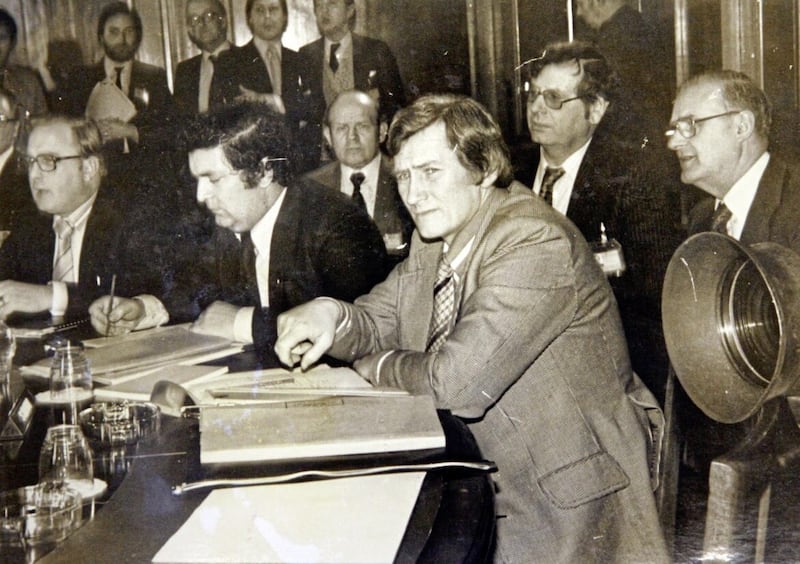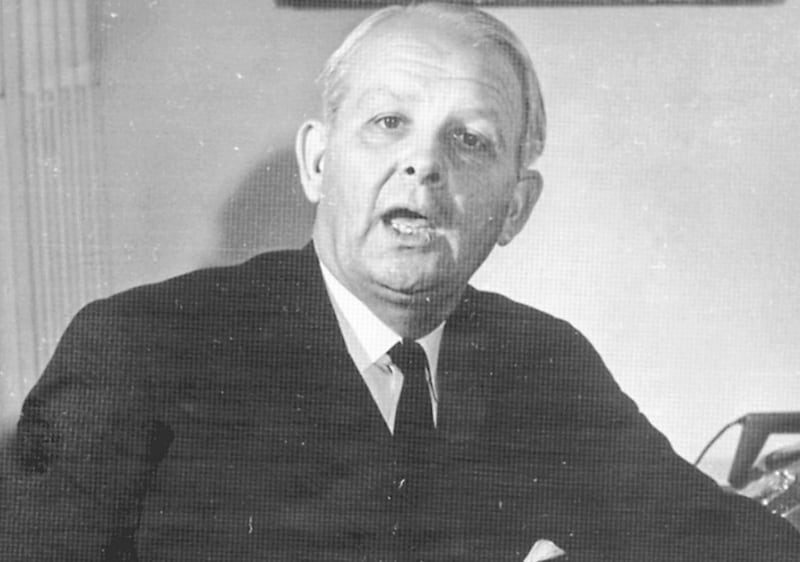It seems 50 years from the inauguration of the power-sharing executive is a time span which has set a lot of people looking at ‘what might have beens’ if the arrangement hadn’t collapsed in May 1974.
People talk in terms of the number of lives that might have been saved, of the wasted years of death, injury and destruction searching for a settlement that looked very like the Sunningdale agreement which produced the short-lived executive in January 1974.
There are no ‘might have beens’ in history. Counter-factual history or ‘what-ifs’ are a waste of time. As former Regius Professor of History at Cambridge Richard Evans says, “We need to start to try to understand why events happened, not to wish that they hadn’t, or argue about whether it was ‘right’ or ‘wrong’. In the effort to understand, counterfactuals aren’t any real use at all.”
We know the immediate reason the executive collapsed. The Faulkner Unionists had lost the support of the majority of unionist voters in the British general election of February 1974.
It’s no good saying the election was called at the wrong time for politics here and if it hadn’t taken place and a useless Labour proconsul appointed, blah, blah, blah. Fair enough, but there’s a lot more to the collapse than the split in unionism and the UWC strike in May 1974.
People quote Seamus Mallon’s quip that the Good Friday Agreement is “Sunningdale for slow learners”. It isn’t. There’s a fundamental difference. In the negotiations at Sunnngdale, Faulkner wouldn’t discuss the RUC, the paramilitary wing of unionism.

Faulkner had resigned as the north’s premier in 1972 because the British prime minister, Ted Heath, had belatedly removed security powers from Stormont. Faulkner wasn’t about to form an administration having lost control of the RUC too.
The power-sharing executive therefore set off in the worst of both worlds. An unreformed RUC containing men who had wantonly killed Catholics on Divis Street and in Ardoyne and in Derry in 1969 and subsequently; and secondly, control of security in the hands of the British army.

In 1974 Faulkner had no power to direct the army to clear UWC barricades even if they had wanted to, which they didn’t. The prevailing wisdom was that the RUC would deal with loyalist violence (hah) and the army with the IRA. That went well, didn’t it?

The major difference with the Good Friday Agreement is the disbandment of the RUC, and the complete removal of the British army from the scene. Furthermore, a civilian police board now oversaw the new PSNI. It took more than a decade after the GFA to establish a department of justice at Stormont and an attorney general.
None of that would have been possible in 1974. According to the staff report on Operation Banner, the army were treating the IRA campaign as a full-scale insurrection by nationalism. Thousands of troops had been deployed in the north, occupying Catholic districts, searching and wrecking hundreds of homes on a daily basis and arresting scores of men for questioning and/or internment. In short, the 1974 executive had no control at all over what was happening on the streets or to the people they allegedly represented.
The major difference with the Good Friday Agreement is the disbandment of the RUC, and the complete removal of the British army from the scene
During the short time of the executive scores of people were killed by loyalists and republicans, and dozens of bombs detonated, including in Dublin and Monaghan. Both groups were trying to bring down the executive, though for different reasons. In all this mayhem the executive was powerless. And so it continued. By the end of the year 304 were dead.
Against a background of the shock loss of Stormont in 1972, the unremitting IRA campaign (over 10,000 shooting incidents in 1972 and a total of 496 dead), compulsory power-sharing with the SDLP – regarded by many unionists as the enemy – and the election of a Labour government not committed to Sunningdale, it’s arguable restoring a Stormont administration went too far, too fast.




